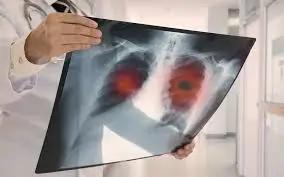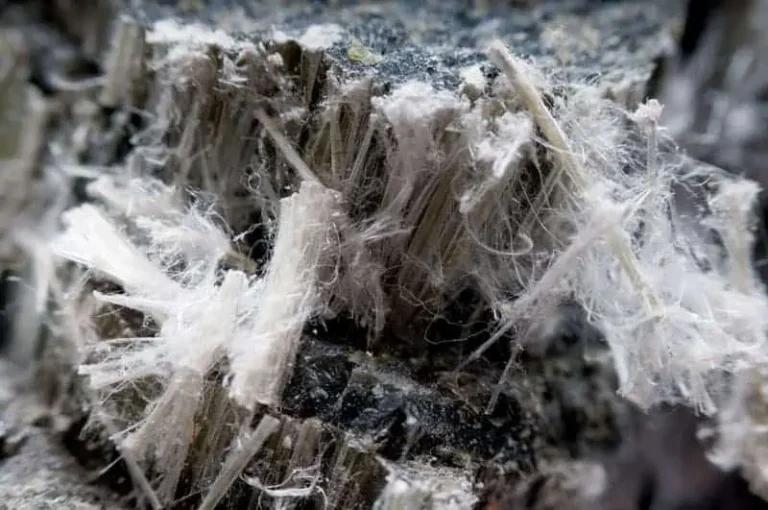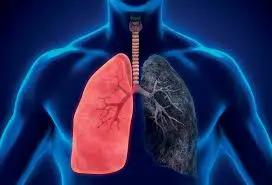
September 17, 2025 (Current Version)
March 28, 2025
Asbestosis, a debilitating lung disease is a condition primarily caused by prolonged exposure to asbestos fibres. It poses a significant threat to those who have worked in industries where this material was once widely used. But the question that remains is whether this pulmonary fibrosis can ultimately lead to the development of lung cancer. In this article, we will look into the relationship between asbestosis and the increased risk of lung carcinomas to gain a better understanding of the link.
Understanding asbestosis
Asbestosis is a chronic and progressive lung disease that arises from the inhalation of asbestos fibers from asbestos products. These microscopic fibres become lodged in the alveoli, the tiny air sacs within the lungs, triggering a series of inflammatory reactions. Over time, the scarring and stiffening of the lung tissue, known as pulmonary fibrosis, make it increasingly difficult for the lungs to function, leading to shortness of breath, coughing, and other respiratory symptoms.
Asbestos exposure
Asbestos is a heat and fire-resistant material that was commonly used in building materials like flooring, ceilings, roofs, and automotive parts. Workers in construction, mining, shipyards, and manufacturing have historically faced the highest risk of occupational asbestos exposure. However, bystander exposure, where individuals are exposed to asbestos fibers brought home on the clothing or skin of workers, and general community exposure, such as through the use of asbestos-containing materials in infrastructure, are also significant contributors to the asbestosis epidemic.
The nature of asbestosis
One of the most dangerous aspects of asbestosis is its hidden nature. Like other asbestos-related diseases, it can take anywhere from 20 to 30 years for the symptoms of the disease to show up, making it difficult to establish a clear link between exposure and the development of the condition and asbestos fibers can remain in the lungs for a long period of time before the disease develops. This long period further complicates the diagnosis and management of asbestosis, as individuals may not be aware of their exposure until the disease has already progressed.
Common symptoms of asbestosis
Common symptoms of asbestosis include shortness of breath, persistent cough, wheezing, and extreme tiredness. These early warning signs often emerge decades after the initial asbestos exposure, making the condition challenging to diagnose. In addition, individuals with a history of smoking or pre-existing lung conditions have a higher risk of developing asbestosis, further complicating the diagnostic process.
Exposure and risk
The duration and intensity of asbestos exposure primarily determine the risk of developing asbestosis. Individuals who have worked in construction, mining, manufacturing, and shipbuilding industries, where asbestos was extensively used, are at the highest risk. Additionally, those involved in the removal of asbestos-containing materials are also susceptible to asbestos exposure and the subsequent development of asbestosis.
Asbestosis and lung cancer
The connection between asbestosis and lung cancer has been the subject of extensive research and debate. The two conditions are closely linked, with the risk of developing lung cancer significantly higher in individuals with a history of asbestos exposure and asbestosis.
Asbestos causes another type of cancer called mesothelioma, which forms in the lining of the lungs, but it is not lung cancer. Lung cancer develops inside the lungs, unlike mesothelioma.
How does asbestos dust cause lung cancer?
The physical and chemical properties of these fibres can cause oxidative stress, DNA damage, and chromosomal abnormalities, directly on normal lung cells turning them malignant. Furthermore, the chronic inflammation and scarring associated with asbestosis may create an environment that allows lung cancer to thrive.
Smoking, asbestos and lung cancer
The risk of lung cancer further increases when asbestos exposure is combined with cigarette smoking. Numerous studies have demonstrated a combined effect between these two risk factors. Individuals who have been exposed to asbestos and are also smokers have a significantly higher risk of developing lung cancer compared to those who have only been exposed to one of these risk factors.
What are the differences between asbestosis and lung cancer?
Distinguishing between asbestosis and lung cancer can be a complex task, as the two conditions may share similar symptoms such as shortness of breath, cough, and chest pain. Healthcare providers often rely on a combination of medical history, physical examination, imaging studies, and lung function tests to reach a correct diagnosis.
In the case of individuals with a history of asbestos exposure, regular screening and monitoring for the development of lung cancer is recommended. This may include regular chest X-rays and computed tomography (CT) scans.
Management of asbestosis-related lung cancer
The outlook for individuals with asbestosis-related lung cancer is generally poorer than for those with lung cancer from other causes. This is largely due to the underlying lung damage and reduced lung function associated with asbestosis. This can limit the treatment options and reduce the effectiveness of certain therapies.
Treatment options
The management of asbestosis-related lung cancer often requires a multidisciplinary approach, involving a team of healthcare professionals, including pulmonologists, oncologists, and thoracic surgeons. Treatment strategies may include a combination of surgical resection, chemotherapy, radiation therapy, and targeted drug therapies, depending on the stage and characteristics of the cancer.
Palliative care and quality of life
In cases where treatment is not possible, the focus often shifts to palliative care, aimed at managing symptoms, improving quality of life, and providing emotional and psychological support to the patient and their loved ones. This may involve the use of oxygen therapy, pain management, and respiratory rehabilitation, among other supportive measures.
Prevention
Given the serious health consequences associated with asbestosis and its link to lung cancer, prevention is extremely important.
Reduce the risk of exposure
The key to preventing asbestosis and its associated health risks lies in the reduction of asbestos exposure. This includes the implementation of strict regulations and safety protocols in industries where asbestos was once widely used, as well as the proper identification, containment, and removal of asbestos-containing materials in older buildings and structures.
Smoking cessation and lung cancer screening
For individuals with a history of asbestos exposure, the importance of smoking cessation cannot be overstated. Quitting smoking can significantly reduce the risk of developing lung cancer, even in those with pre-existing asbestosis. Additionally, regular lung cancer screening, such as low-dose CT scans, can aid in the early detection of malignancies, improving the chances of successful treatment.
Government compensation schemes
Many countries have implemented compensation programs that provide financial assistance and healthcare coverage for those diagnosed with asbestosis or asbestos-related diseases, including lung cancer. These schemes often require documentation of occupational exposure and medical evidence to establish the causal link between asbestos exposure and health conditions.
Patient support
In addition to compensation, numerous patient advocacy organisations and support groups have been established to provide emotional, practical, and educational resources for individuals and families affected by asbestosis and asbestos-related lung cancer. These organisations can offer guidance on accessing healthcare, help with the legal system and connect with other affected individuals for peer support.
Conclusion
The complex relationship between asbestosis and lung cancer highlights the importance of continued research, effective prevention strategies, and comprehensive patient care. By understanding the underlying mechanisms, risk factors, and diagnostic considerations, healthcare professionals can work towards early detection, targeted interventions, and improved outcomes for those affected by this devastating condition.
Sources
- Asbestosis – Diagnosis & treatment – Mayo Clinic
- Asbestos Toxicity: Clinical Assessment – Tests – Environmental Medicine – ATSDR
- Asbestosis: Causes, Symptoms, Diagnosis & Treatment
- Asbestosis – NHS
Medical Disclaimer
NowPatient has taken all reasonable steps to ensure that all material is factually accurate, complete, and current. However, the knowledge and experience of a qualified healthcare professional should always be sought after instead of using the information on this page. Before taking any drug, you should always speak to your doctor or another qualified healthcare provider.
The information provided here about medications is subject to change and is not meant to include all uses, precautions, warnings, directions, drug interactions, allergic reactions, or negative effects. The absence of warnings or other information for a particular medication does not imply that the medication or medication combination is appropriate for all patients or for all possible purposes.







